History
The SS Pedernales was a shallow bottomed British oil tanker that was used as one of the early lake tankers that brought crude oil to the Lago Oil Refinery situated at San Nicolaas in Aruba from Venezuela. This type of tanker was specifically designed for transporting oil from lake Maracaibo to Aruba and Curaçao. The Pedernales was built in Italy in 1938. It mainly sailed under the British Flag.
World War II
The war had beneficial economic effects for Aruba as it had dissipated the oil industry in Europe. Aruba became a main supplier for fuel and was therefore an important target for the Germans. During the war, the Pedernales was stationed in Aruba and provided the British with oil.
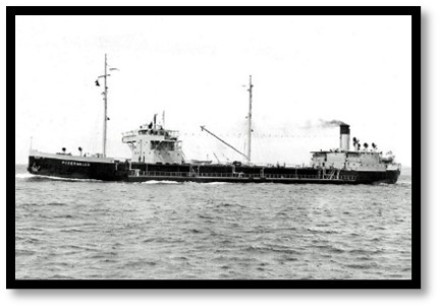
On February 16th 1942, the German navy commenced Operation Neuland, an operation targeted against allied shipping in the Caribbean, which led to an attack on three ships in Aruban waters by U-156. The U-Boat entered Aruban waters a few days prior from the western side and started a reconnaissance of targets within the region. It located the oil refinery and multiple oil tankers, and spent the next two days coming up with a plan of attack.
U-boat attack
In the late evening of February 15th, U-156 approached the Lago Oil Refinery and her captain (Werner Hartenstein) chose two oil tankers to attack, the Pedernales and the SS Oranjestad. The Pedernales would be the first victim of the three attacks on oil tankers that occurred on February 16th.
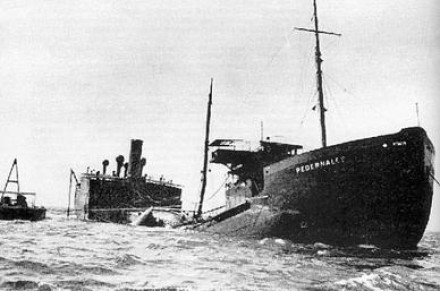
The Pedernales was hit amidships by one torpedo and burned fiercely all night, but did not sink. The torpedo caused significant damage to the ship as it was filled with crude oil at the time, and the vessel caught fire instantly. However, the ship remained afloat and drifted from Sero Colorado to Palm Beach where large sections that were charred, twisted, and crumpled, broke off and sank.
These sections of the ship are still present strewn across coral reefs (parts of the ship such as cabins, washbasins, and pipelines systems). The next day tug boats pushed her ashore near Sabaneta and she was later taken to the Lago dry dock in San Nicholas, where the middle section was removed, the bow and aft welded together and a temporary wheel house was fitted. The tanker went to Baltimore under her own power and returned to service after being rebuild.
The crew of the Pedernales managed to leave the ship during the attack. However the attack did result in the death of eight people, while 18 of the crew survived.
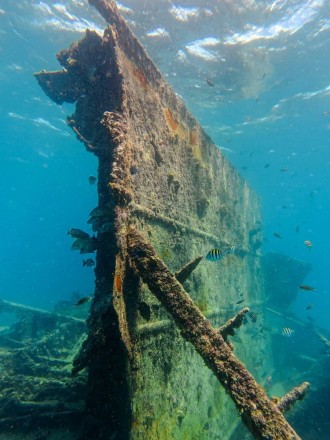
Description
Yard: Cantiere Riuniti dell’ Adriatico (CRDA), Monfalco
Engine: 2 x 3 cylinder triple expansion steam engines, dual shaft, 2 screws, 2 single boilers, 6 corrugated furnaces; built by North Eastern Marine Engineers Ltd., Sunderland
Owner: Lago Shipping Co Ltd (Esso), London
| Master | Herbert McCall |
|---|---|
| People on board | 26 |
| Power | 318 hp |
| Length | 355 feet (108.2 m) |
| Width | 60 ¼ feet (18.4 m) |
| Tonnage | 4317 ton |
Status
The Wreck
The ship remnants remain present at Palm Beach. Later in the war, they were used by the US army Air Force for bombing practice. Multiple AN-MK43 aerial dummy bombs were found throughout the years, which were in use by the US military since 1942.
The scattered remains of the SS Pedernales now reside at a maximum depth of eight to nine meters, with an average visibility of 28 - 30 meters, southwest of the ES Antilla shipwreck. The remnants have now become an artificial reef that houses an abundance of marine life, namely large schools of grunts, silversides, snappers, trumpetfish, angelfish, grouper, squirrelfish, stingrays, turtles, pufferfish, scorpionfish, lobsters, nurse sharks, eagle rays, and goatfish.
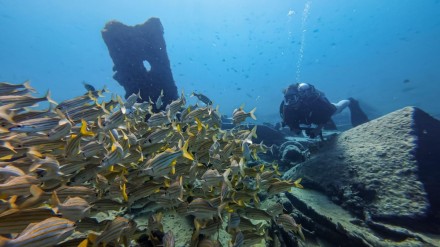
The remnants of the ship are subject to mechanical, biological, and chemical threats. The Pedernales parts are situated on the northwest side of the island, which is susceptible to hurricanes and tropical storms which can cause the displacement of the remains, moving them from their original archaeological and environmental context. In addition, the rough or extreme tidal movements can weaken the coral reefs present on the remains. The ship remnants are made out of metal which undergo a continuous metal erosion due to the contact with sea water. Fishing activities are destructive and cause parts of the remains to break off. Lastly, the remains of the Pedernales are a popular dive site, in turn making it susceptible to looting.
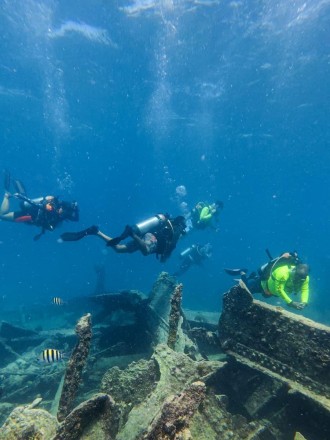
Maritime Heritage Management Training Programme 2025
In November 2025, a training programme for the conservation of valuable underwater heritage in the Caribbean took place on Aruba and the participants dove on the wreck of the Pedernales. The training had a theoretical and practical part. During the dives, the participants were immediately able to put their recently acquired knowledge into practice.
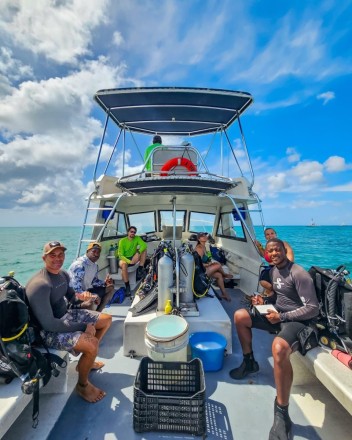
During the first part of the training, the participants worked ashore. They received theoretical training, did desk research and created a management plan and posters. In the second part, they practiced in various underwater research techniques, taking depth measurements, and preparing dive reports. In this way, they intensively developed their skills and knowledge in the field of maritime heritage and sustainable management. This has prepared the local experts to protect and manage the maritime heritage in their own waters.
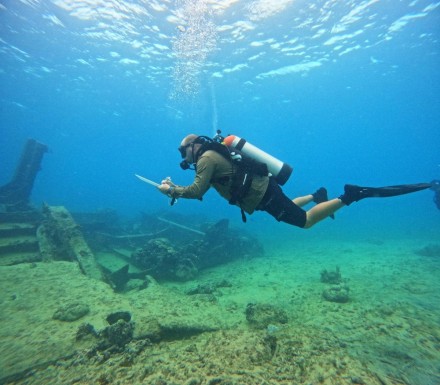
16 people from the Caribbean part of the Kingdom of the Netherlands (Aruba, Curaçao, Bonaire, St. Maarten, St. Eustatius, and Saba) participated in the programme. The training was an initiative of the Cultural Heritage Agency of the Netherlands (RCE) in collaboration with the National Archaeological Museum of Aruba (hashtag #MANA).
Extensive information on this training program can be found in the blog of the RCE and on the website on the Pedernales created by the participants (see references).
References
- uboat.net U 46.
- Wrecksite.eu.
SS Pedernales. - Pure Diving Aruba.
Pedernales. - Willemsubmerged.
Pedernales, the Phoenix of Aruba. - Participants Maritime Training Program 2025.
SS Pedernales. From wreck to wonder. - RCE.
Terugblik training maritiem erfgoedbeheer op Aruba. - RCE.
Reflections on a successful maritime heritage management training programme on Aruba.